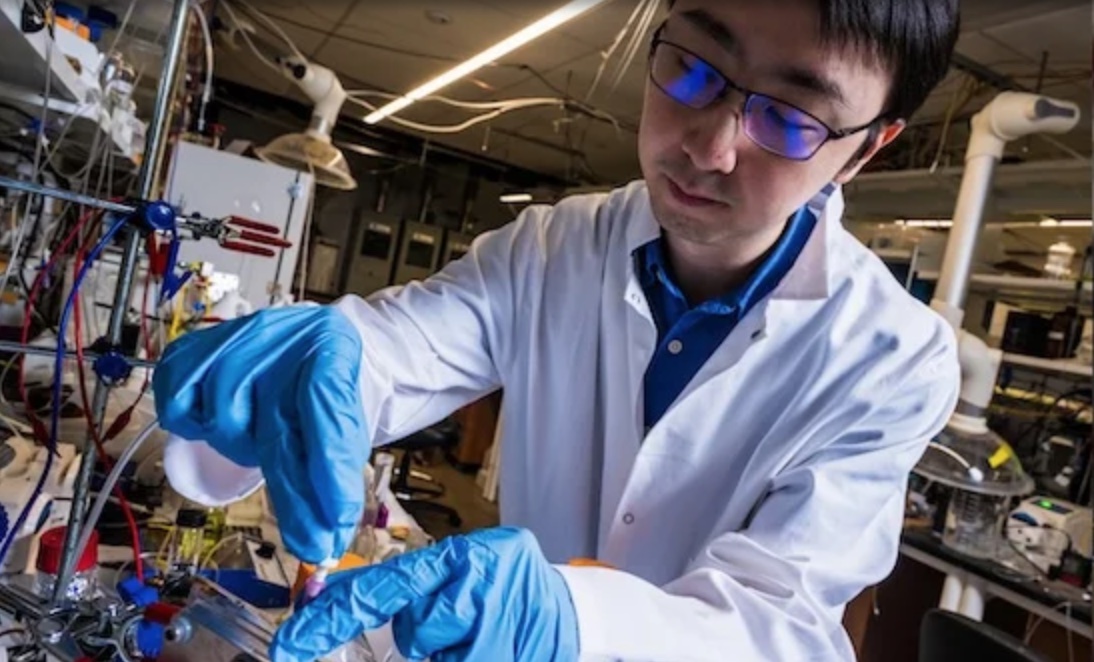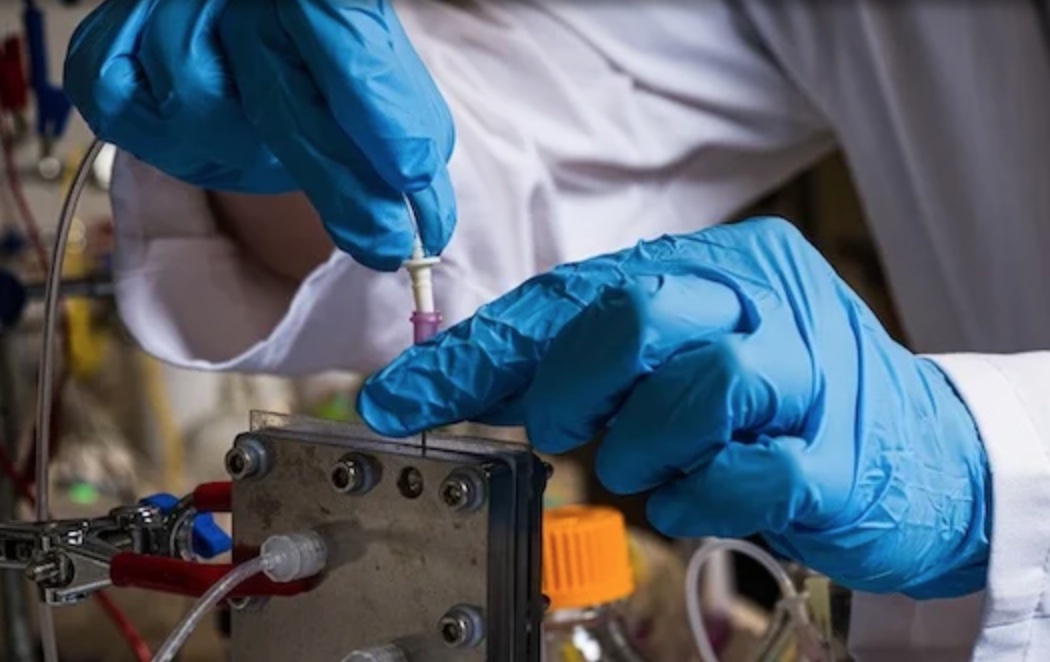Rice University Team Develops Wastewater Reactor That Yields Green Ammonia and Purified Water
Outcome/Accomplishment
Researchers at the Nanotechnology-Enabled Water Treatment (NEWT) Nanosystems Engineering Research Center (ERC), a U.S. National Science Foundation (NSF)-funded ERC based at Rice University, have developed a revolutionary reactor design to help mitigate water pollution. The reactor treats nitrate-contaminated water by converting nitrates into ammonia without a denitrification process. The reactor yields both “green” ammonia and purified water.
Impact/Benefits
Ammonia is widely used around the world, with global demand surpassing 180 million tons annually. At the same time, ammonia production accounts for roughly 2% of global energy consumption and 1.4% of carbon dioxide emissions.
The ammonia yielded by NSF NEWT Lead Researcher Haotian Wang’s process offers a greener, more carbon-neutral solution to ammonia production. At the same time, the development of green ammonia could also influence how industries and communities handle a host of environmental challenges. While the new reactor system could help decarbonize the ammonia production process, the design of the reactor and the study’s accompanying techno-economic assessment can help inform further research into other eco-friendly chemical processes.
Explanation/Background
Dr. Pedro Alvarez, director of the NSF NEWT ERC and the Water Technologies Entrepreneurship and Research (WaTER) Institute at Rice University, notes that “conventional nitrate removal in drinking water treatment involves ion exchange or membrane filtration by reverse osmosis, which generates brines and transfers the nitrate problem from one phase to another.”
In contrast, Wang created a reactor using recyclable ions and a three-chamber system to improve efficiency. One of the key innovations is the use of a three-chamber, porous, solid electrolyte coupled with cation-shielding effects, which eliminates the need for high concentrations of supporting electrolytes. Nitrate-contaminated water was fed through the reactor to create ammonia, which was measured, while the treated water was tested for purity. Extra chemicals were not needed and the conversion process leveraged renewable energy for a carbon neutral solution.
As a result of the work, a paper entitled “Electrochemical nitrate reduction to ammonia with cation shuttling in a solid electrolyte reactor” was published in Nature Catalysis by chemical and biomolecular engineering graduate student, Feng-Yang Chen.
Location
Houston, Texaswebsite
Start Year
Energy and Sustainability
Energy, Sustainability, and Infrastructure
Lead Institution
Core Partners
Fact Sheet
Outcome/Accomplishment
Researchers at the Nanotechnology-Enabled Water Treatment (NEWT) Nanosystems Engineering Research Center (ERC), a U.S. National Science Foundation (NSF)-funded ERC based at Rice University, have developed a revolutionary reactor design to help mitigate water pollution. The reactor treats nitrate-contaminated water by converting nitrates into ammonia without a denitrification process. The reactor yields both “green” ammonia and purified water.
Location
Houston, Texaswebsite
Start Year
Energy and Sustainability
Energy, Sustainability, and Infrastructure
Lead Institution
Core Partners
Fact Sheet
Impact/benefits
Ammonia is widely used around the world, with global demand surpassing 180 million tons annually. At the same time, ammonia production accounts for roughly 2% of global energy consumption and 1.4% of carbon dioxide emissions.
The ammonia yielded by NSF NEWT Lead Researcher Haotian Wang’s process offers a greener, more carbon-neutral solution to ammonia production. At the same time, the development of green ammonia could also influence how industries and communities handle a host of environmental challenges. While the new reactor system could help decarbonize the ammonia production process, the design of the reactor and the study’s accompanying techno-economic assessment can help inform further research into other eco-friendly chemical processes.
Explanation/Background
Dr. Pedro Alvarez, director of the NSF NEWT ERC and the Water Technologies Entrepreneurship and Research (WaTER) Institute at Rice University, notes that “conventional nitrate removal in drinking water treatment involves ion exchange or membrane filtration by reverse osmosis, which generates brines and transfers the nitrate problem from one phase to another.”
In contrast, Wang created a reactor using recyclable ions and a three-chamber system to improve efficiency. One of the key innovations is the use of a three-chamber, porous, solid electrolyte coupled with cation-shielding effects, which eliminates the need for high concentrations of supporting electrolytes. Nitrate-contaminated water was fed through the reactor to create ammonia, which was measured, while the treated water was tested for purity. Extra chemicals were not needed and the conversion process leveraged renewable energy for a carbon neutral solution.
As a result of the work, a paper entitled “Electrochemical nitrate reduction to ammonia with cation shuttling in a solid electrolyte reactor” was published in Nature Catalysis by chemical and biomolecular engineering graduate student, Feng-Yang Chen.


